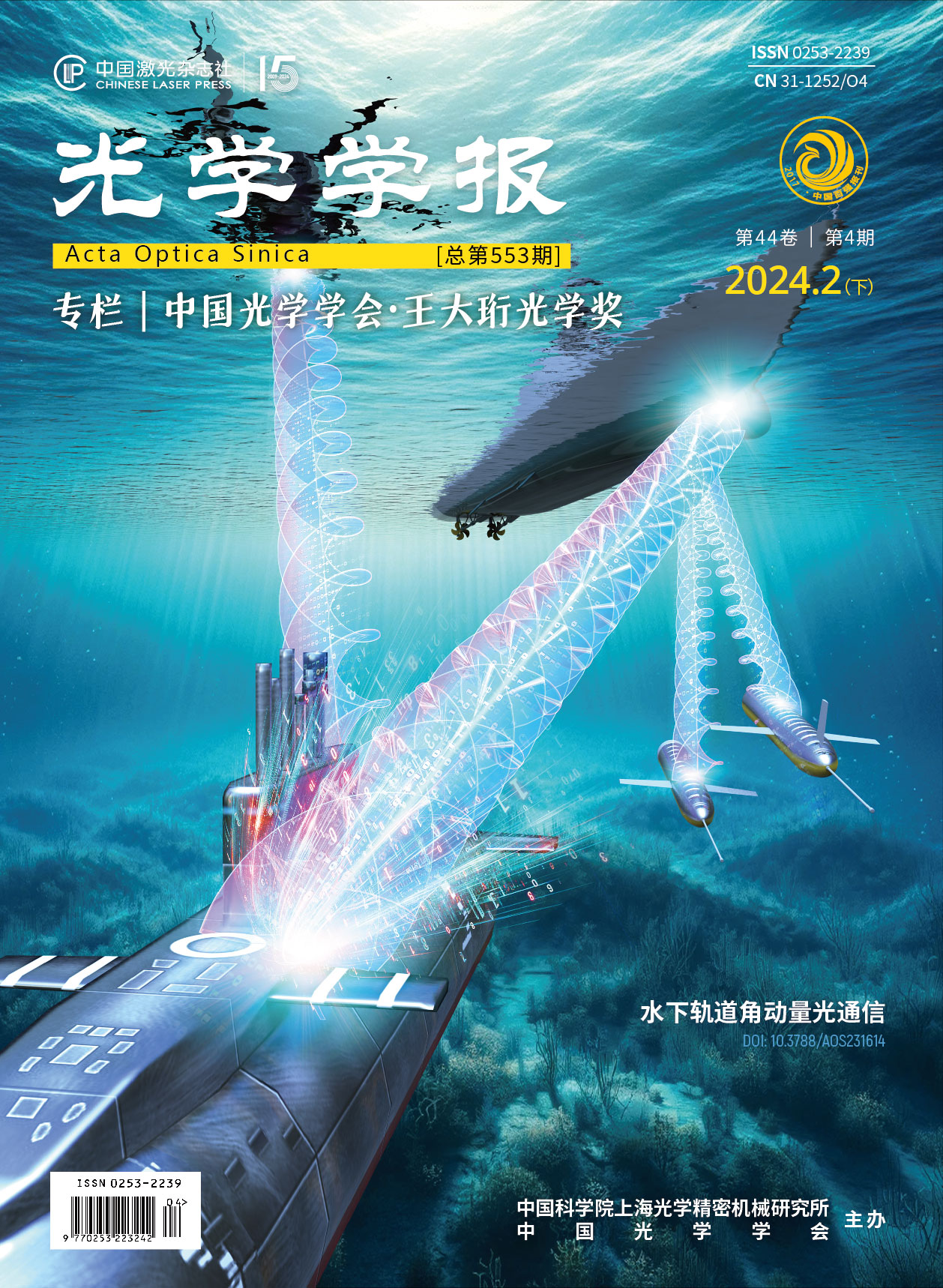水下轨道角动量光通信  下载: 591次封面文章特邀综述
下载: 591次封面文章特邀综述
The ocean occupies more than 70% of the earth's surface, which has vast area and rich resources. Research and exploration of the ocean have never ended. Due to the complexity and variability of the underwater environment, the ocean has not yet been fully explored and utilized. Further exploration of the underwater environment plays an important role in climate change, oil and gas detection, disaster early-warning, biological research, and other fields. Underwater wireless communication ensures information transmission and interconnection between unmanned devices in the underwater environment during ocean exploration. As the demand for underwater data transmission increases, high-bandwidth and low-latency underwater communication has become a key technology for exploring and utilizing the ocean at a deeper level.
Commonly used carriers for underwater wireless communications include sound waves, electromagnetic waves (e.g. radio frequencies), and light waves. Each of the three carriers has its own characteristics. Although sound waves, as a traditional underwater communication method, have the advantage of a wide transmission range and have been widely used, the problems of relatively narrow bandwidth and longer delay in the medium limit their applications. Electromagnetic waves are difficult to be widely used in underwater environments as they require complicated equipment and short transmission distances. As a new type of underwater communication technology, underwater wireless optical communication has gained widespread attention due to its advantages such as larger transmission bandwidth, better anti-interference ability, lower latency, and lower costs. Underwater wireless optical communication refers to an underwater communication system that uses light waves as the transmission carrier. In recent years, underwater wireless optical communication has made considerable progress in the transmission capacity through the expansion and utilization of multiple physical dimensions of light waves, such as wavelength, time, amplitude, phase, and polarization. However, there are challenges in further improving the transmission capacity. The exploration of the spatial dimension of light waves has become a feasible way for capacity scaling.
Structured light refers to a special light field that exploits the spatial dimension by tailoring the spatial amplitude, phase, and polarization distribution of light waves to obtain the required characteristics. Especially, structured light with a spiral phase front carrying orbital angular momentum (OAM) has attracted interest in many applications such as optical manipulation, tweezers, sensors, metrology, microscopy, imaging, and quantum science. OAM-carrying structured light appears spatially as an annular intensity distribution due to phase singularity at the beam center. Since OAM-carrying structured light can accommodate multiple orthogonal spatial modes, it has important advantages in expanding the capacity of underwater wireless optical communication. We comprehensively reviewed the advances in underwater OAM optical communications.
We first introduced the development history of three types of underwater wireless communication technology, including underwater acoustic communication, underwater electromagnetic (radio frequency) communication, and underwater optical communication, and summarized their respective advantages and disadvantages. Then, we focused on underwater wireless optical communication using OAM modes, with their basic principle, generation, and measurement methods introduced. The research progress of underwater OAM mode wireless optical communication was comprehensively reviewed, including underwater OAM mode encoding and decoding communication, underwater OAM mode multiplexing communication, and underwater OAM mode broadcasting communication. Moreover, OAM mode optical communications involving air-water interface ("water-air-water" crossing air-water medium, total reflection by "air-water" interface) and fast auto-alignment assisted OAM mode optical communications were presented. In addition to the OAM mode, other underwater structured light (e.g. Bessel beam and Ince-Gaussian beam) communications were also introduced. Additionally, complex medium optical communications using OAM modes assisted by adaptive turbulence compensation and fast auto-alignment were presented.
OAM mode exploits the spatial dimension of light waves, providing a new way for the sustainable capacity expansion of underwater wireless optical communication. The future development trend of underwater wireless optical communication is as follows. From the spatial mode point of view, more flexible and powerful spatial light manipulation, a large number of OAM modes, more general structured light accessing the full spatial dimension (spatial amplitude, spatial phase, and spatial polarization), and full use of multiple dimensions are highly desired. From the underwater communication point of view, complex channel modeling, high capacity, long distance, and high robustness are highly expected. Key devices [lasers, modulators, detectors, converters, and (de)multiplexers] and techniques (high speed, high power, high sensitivity, high efficiency, high scalability, and high integration) are of great importance. Meanwhile, from the perspective of future underwater wireless optical communication, on the one hand, it is expected to be combined with electromagnetic (e.g. RF) communication and acoustic communication. According to different application scenarios and different capacity and distance requirements, one or more suitable communication methods and their combinations can be selected. On the other hand, the integration of underwater wireless optical communication technology and underwater perception technology (i.e. integrated communication and perception) is also an important research direction in the future, which is of great significance for improving the development capacity of marine resources, developing the marine economy, protecting the marine ecological environment, and serving the strategy of becoming a powerful marine country.
王健, 王仲阳. 水下轨道角动量光通信[J]. 光学学报, 2024, 44(4): 0400001. Jian Wang, Zhongyang Wang. Underwater Orbital Angular Momentum Optical Communications[J]. Acta Optica Sinica, 2024, 44(4): 0400001.







